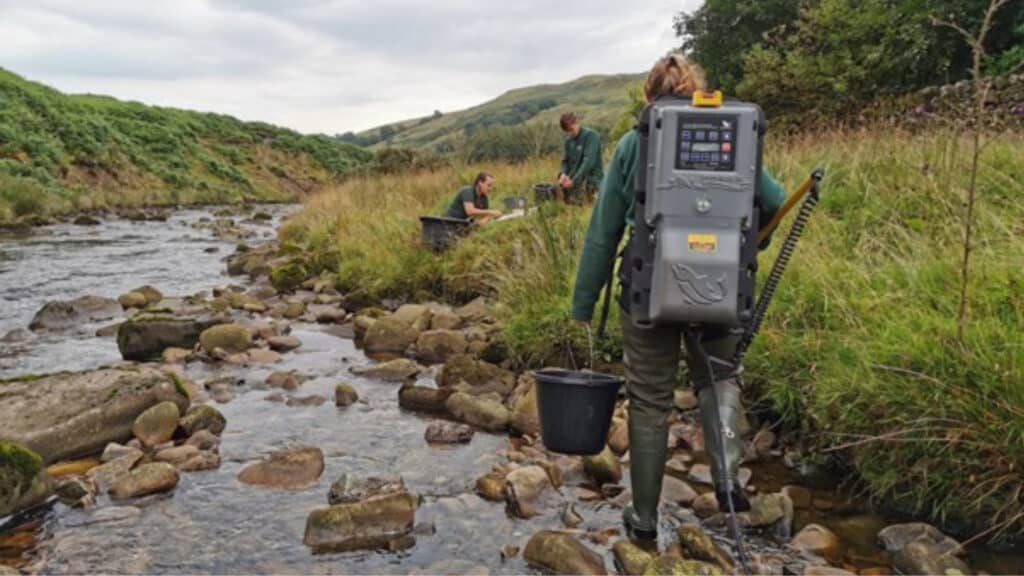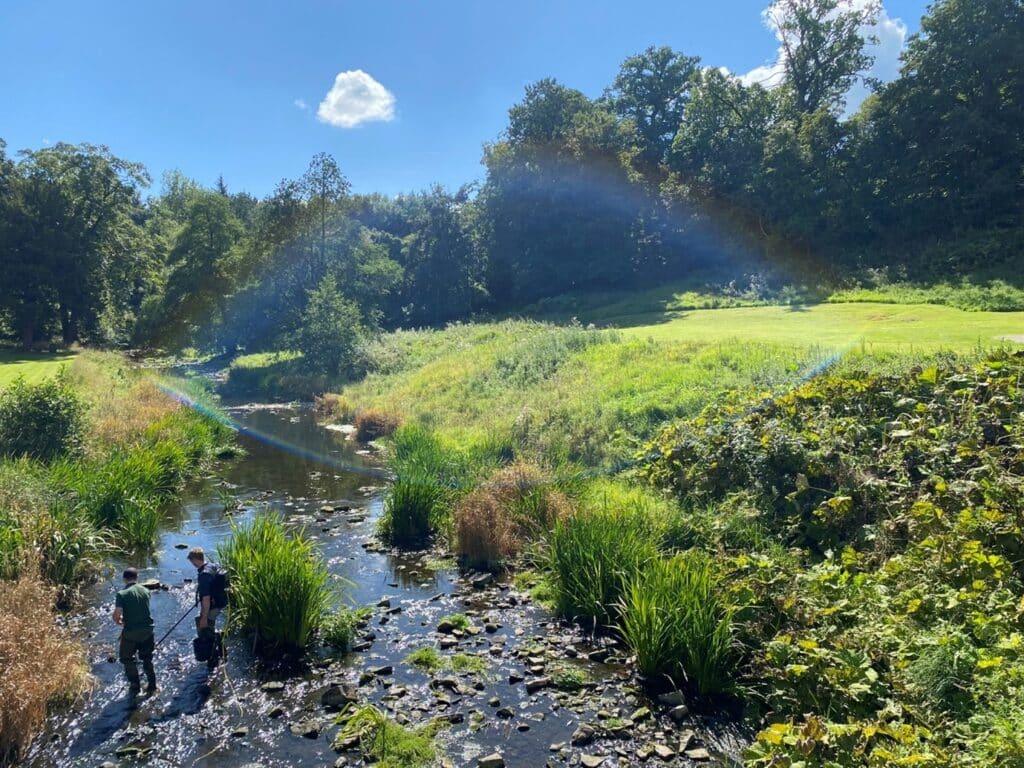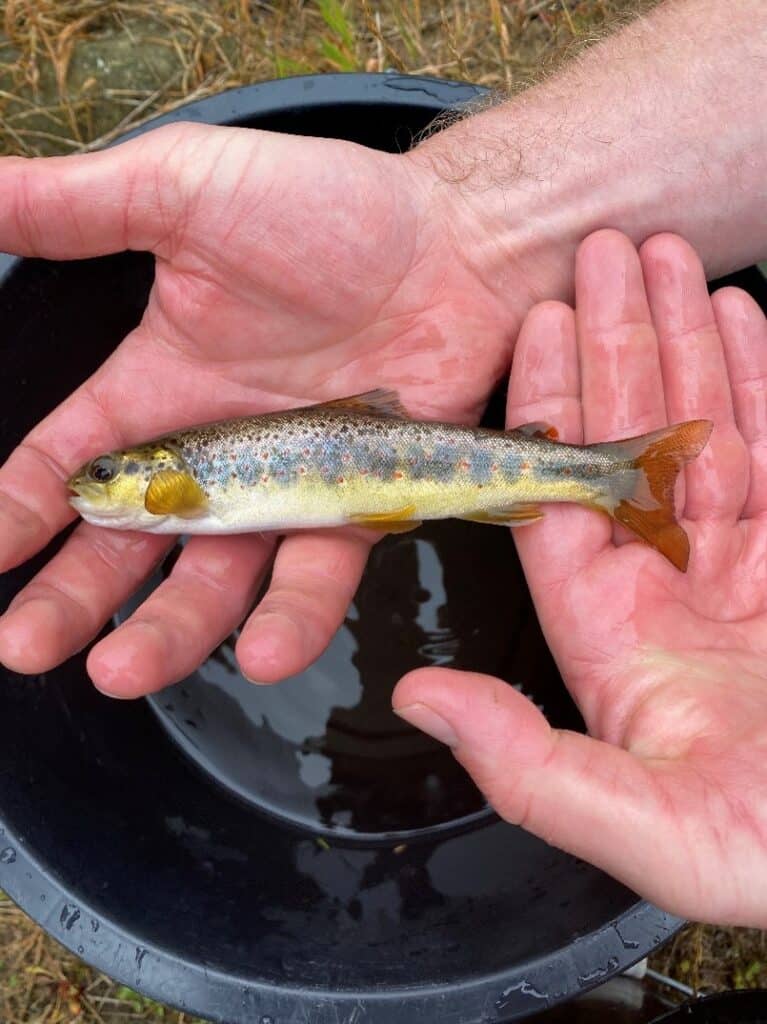This summer, our fish monitoring team surveyed 294 sites across the Ribble Catchment between June and October!

What is fish monitoring?
Our surveys are carried out to monitor fish numbers, particularly salmonids, looking for the young of year. This helps us to gauge the health of our rivers. It also means we can look for the areas which are doing well, and the areas which seem to be in poorer health.
So how do we monitor fish?
Electrofishing is a fishing method that uses an electrical current flowing between a submerged cathode and anode. This mild current affects the way that fish move, making them swim towards the current. Then our fish monitoring team catch them, count them, measure them, and return them.
This is a common way of carrying surveying fish and it doesn’t harm the fish. In fact, it only takes a couple of minutes for them to return to normal, and we take really good care of them!
The summer of 2022 brought us many things, but something that got lost in the post was rain. After long periods of extraordinarily warm and dry weather, rivers across the catchment have been drying up. Plus, those that are still flowing have extremely high temperatures.
For obvious reasons, rivers with no water in them are not good for fish, but why does temperature matter?

Why do high temperatures create issues?
Fish breathe by passing water over their gills, where dissolved oxygen travels into the fish’s blood. However, higher water temperatures causes a decrease in oxygen levels in the water. This means warmer water is less inhabitable for fish. Fish like Brown Trout, which are relatively common in our rivers, begin to struggle when water temperatures reach 20°c. This is a concern when water temperatures through the summer were frequently over 20°c.
Fish have very specific requirements for parts of their life cycles such as reproduction. Coldwater fish, such as the Salmonids we’re looking for in our electrofishing surveys, like to reproduce at temperatures just above freezing. Due to these preferences, a body of water that experiences a drastic temperature change inconsistent with its history can cause fish to either leave the area or reduce in number due to lack of reproduction.
So what happens to fish in a heatwave?
The rate of metabolism, the process that converts food to energy, is dependent on water temperatures. In general, for every 10°c that water temperature increases, a fish’s metabolic rate doubles. Meaning fish not only need to feed more, but they also need more oxygen.

This problem is compounded by the fact that oxygen supplies become quickly depleted in warmer water. As temperatures rise, toxicity of the water may also increase, as toxic substances become more soluble. Warmer water is also more likely to grow fungus and algae, which can be detrimental to fish life due to processes like eutrophication.
The optimal temperature for Atlantic Salmon to feed is between 20°c and 23°c, any higher than this and they will stop feeding, becoming leaner and more susceptible to slight changes in their environment.

